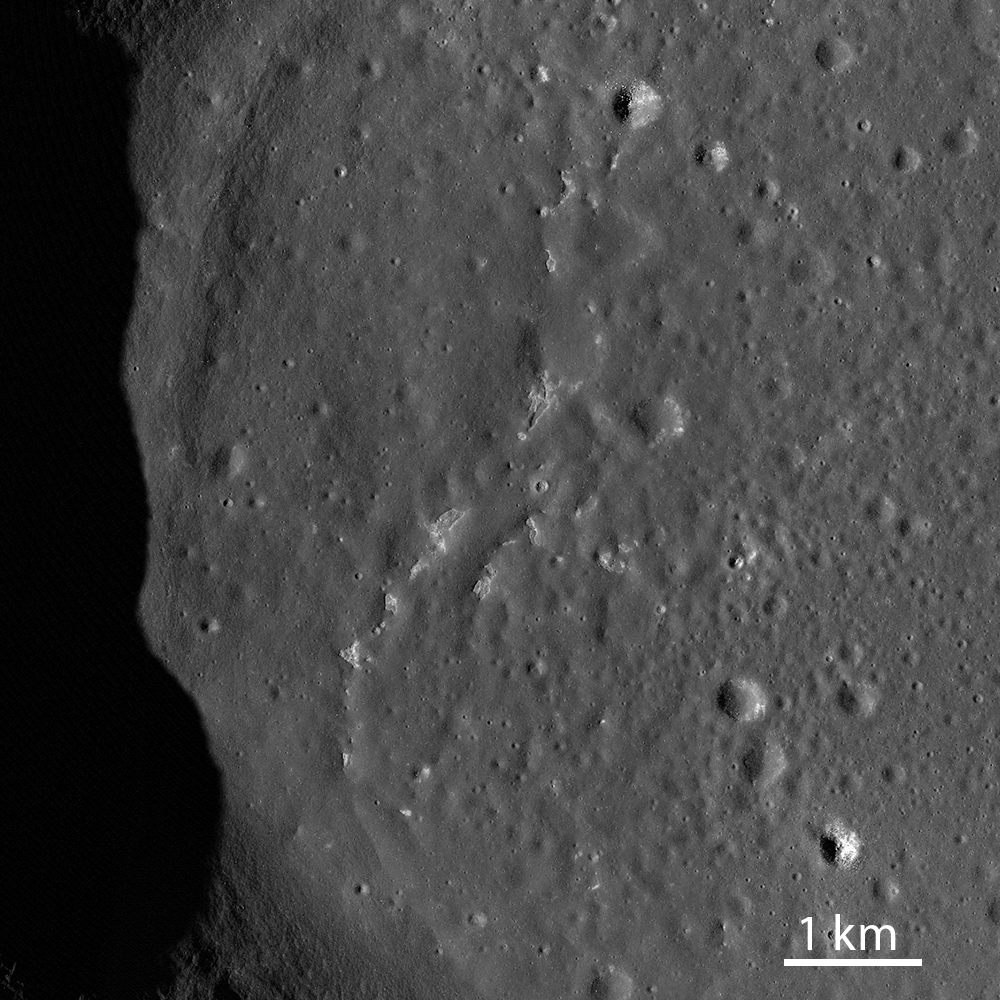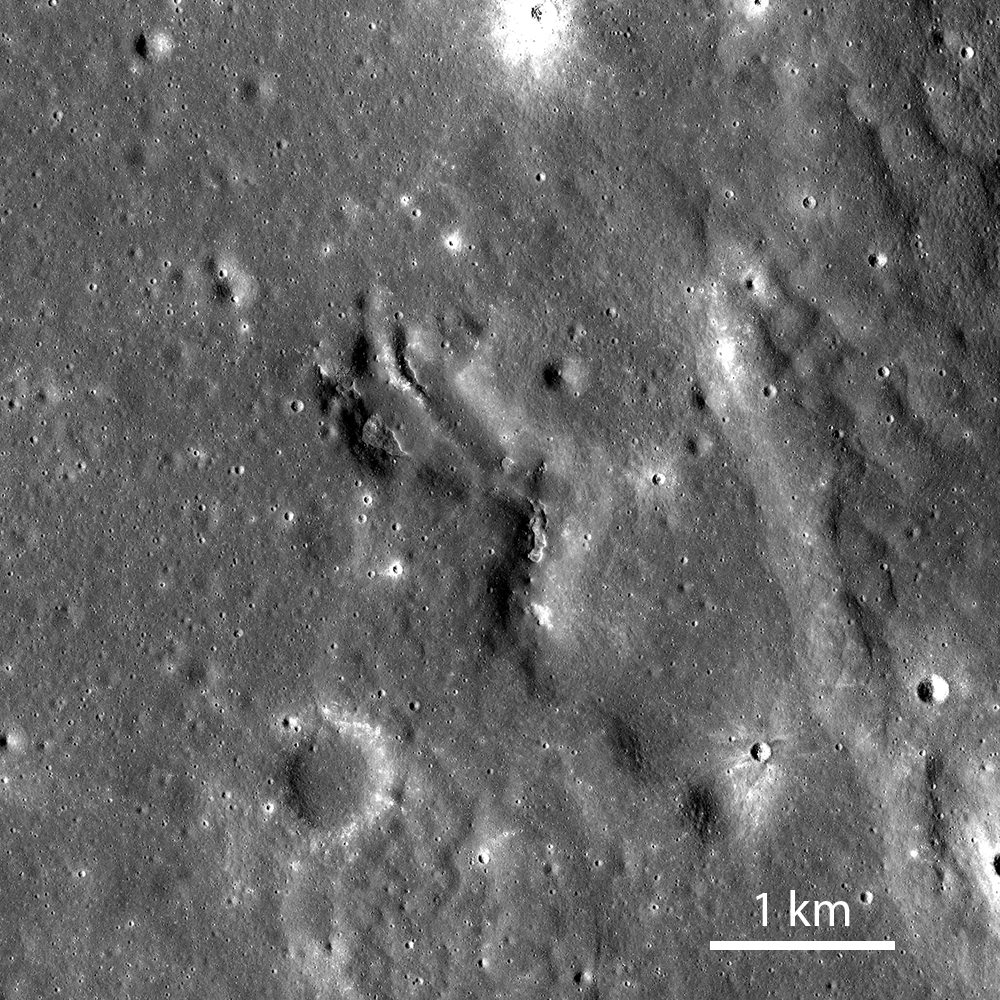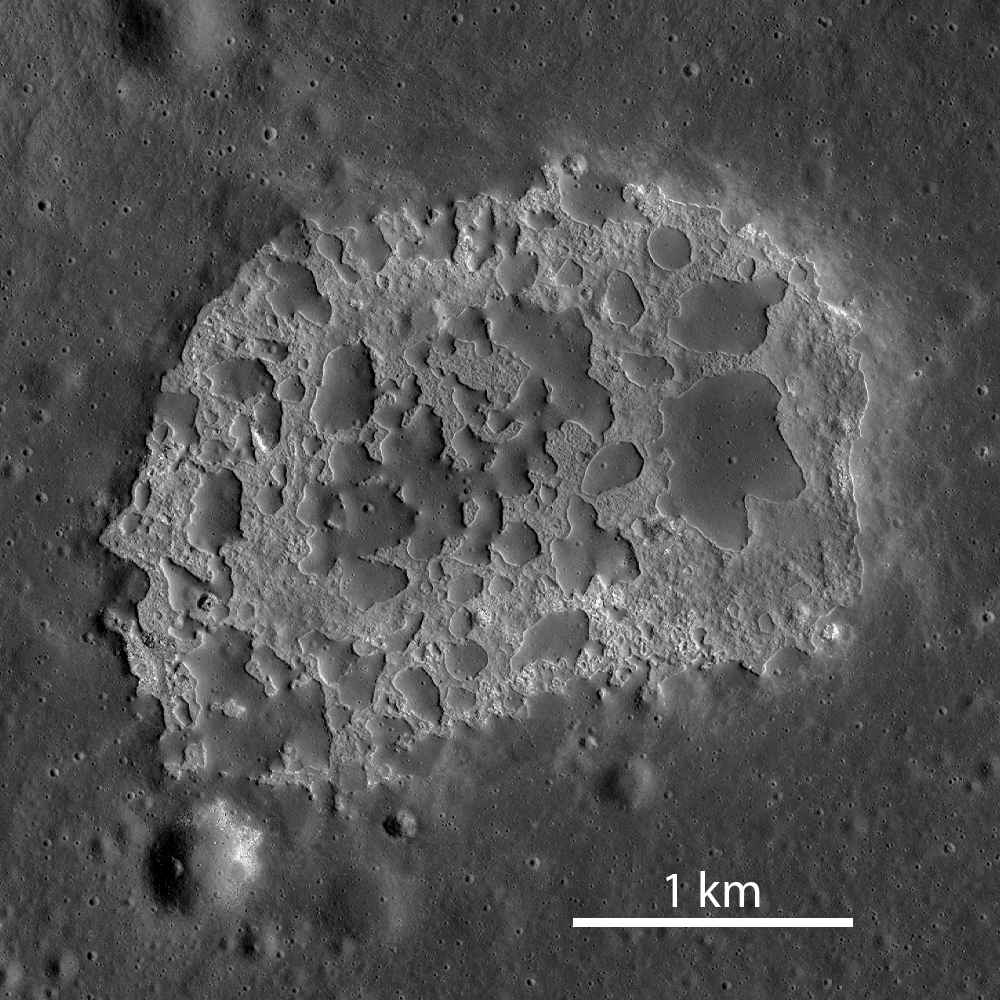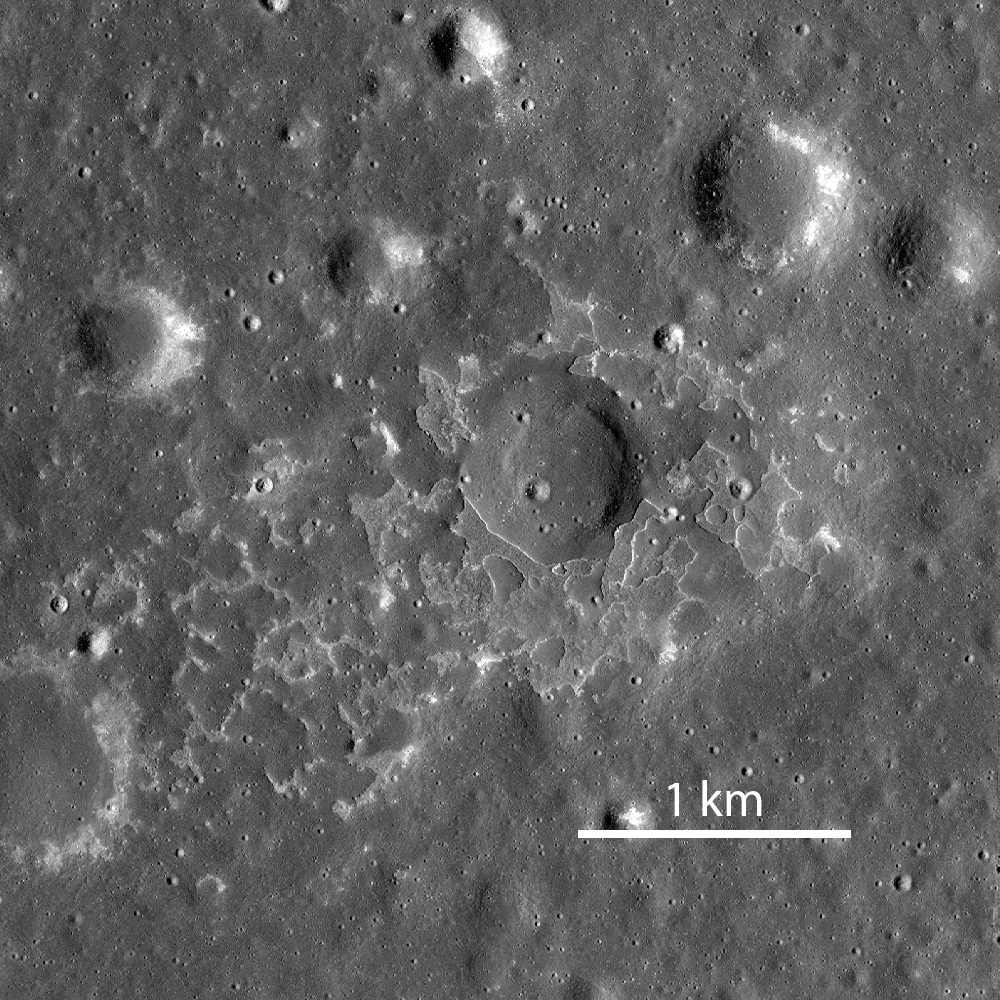
IMPs on the Moon, you say? Do small, mischievous demons live on the Moon?! No, not those kinds of IMPs! IMPs or “Irregular Mare Patches” are thought to be volcanic deposits (typically 100–1000 m across). Their general lack of superposed impact craters greater than 20 meters in diameter suggest that they are some of the youngest volcanic deposits on the Moon, perhaps less then 100 million years young. An alternative hypothesis suggests that IMPs might be ancient, but formed from a low density magma – an extreme form of pumice. To learn about the history of IMP discovery and LROC’s part in finding new ones, check this out!
Below, see some of the other fantastic controlled mosaics of IMPs composed from LROC NAC images!

IMPs typically have two distinct morphological features: smooth deposits and uneven deposits, with an abrupt change in slope where the two meet. Smooth deposits are generally higher in elevation and sometimes appear to superimpose rough deposits. See if you can spot the different textures with these high-resolution controlled mosaics!


Ina has been studied as far back as the Apollo era. Originally, it was thought to have been a collapsed caldera associated with a shield volcano. That hypothesis is still valid, however we really do not know the origin of these enigmatic feature.

IMPs have only been found within nearside maria, where 70 have been identified to date. Lunar scientists would expect to find at least three IMPs larger than 100 meters in diameter within the farside maria, but none have been found – yet!
Zoom in and out of the Sosigenes IMP below!
Learn more about the places near these IMPs:
Sosigenes: What's Next for LRO?
Cauchy: Watch That First Step!
Ina: Another Lunar Enigma
Maskelyne: Eroding Craters Walls
Do you want to download these images yourself?
Interested in learning more about controlled mosaics? Check out Feature Mosaics: Behind the Seams
Published by Jessica Walsh on 24 February 2021